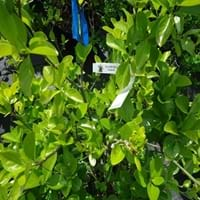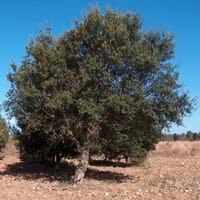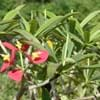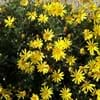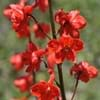Life Span
Perennial
Perennial
Origin
Europe, Western Asia
China
Types
Not Available
Not Available
Habitat
Floodplains, Open Forest
Hills, Lower slopes, open Woodlands
USDA Hardiness Zone
4-7
4-8
Sunset Zone
1a, 1b, 2a, 2b, 3a, 3b, 4, 5, 6, 7, 8, 9, 14, 15, 16
A3, 1a, 1b, 2a, 2b, 3a, 3b, 4, 5, 6, 7, 8, 9, 14, 15, 16, 17, 18, 19, 20, 21
Habit
Oval or Rounded
Upright/Erect
Flower Color
Yellow green
Light Green
Flower Color Modifier
Not Available
Not Available
Fruit Color
Orange
Brown, Light Green, Lime Green
Leaf Color in Spring
Green
Green, Light Green
Leaf Color in Summer
Green
Green, Light Green
Leaf Color in Fall
Yellow, Red, Yellow green
Red
Leaf Color in Winter
Not Available
Not Available
Plant Season
Fall
Spring, Summer, Fall, Winter
Sunlight
Full Sun, Partial Sun, Partial shade
Full Sun, Partial Sun, Partial shade
Type of Soil
Clay, Loam, Sand
Clay, Loam, Sand
The pH of Soil
Acidic, Neutral, Alkaline
Acidic, Neutral, Alkaline
Soil Drainage
Well drained
Well drained
Bloom Time
Late Spring
Late Spring, Early Summer
Tolerances
Drought
Drought, Salt
Where to Plant?
Ground
Ground, Pot
How to Plant?
Seedlings, Transplanting
Seedlings
Plant Maintenance
Medium
Low
Watering Requirements
Keep the ground moist but not water-logged, Requires a lot of watering, Requires regular watering, Requires watering in the growing season
Average Water Needs, Requires regular watering, Requires watering in the growing season
In Summer
Lots of watering
Lots of watering
In Spring
Moderate
Moderate
In Winter
Average Water
Average Water
Soil pH
Acidic, Neutral, Alkaline
Acidic, Neutral, Alkaline
Soil Type
Clay, Loam, Sand
Clay, Loam, Sand
Soil Drainage Capacity
Well drained
Well drained
Sun Exposure
Full Sun, Partial Sun, Partial shade
Full Sun, Partial Sun, Partial shade
Pruning
Prune in late winter, Prune in spring, Remove dead leaves, Remove shoots
No pruning needed
Fertilizers
All-Purpose Liquid Fertilizer
No fertilizers needed
Pests and Diseases
Red blotch
Red blotch, Spider mites
Plant Tolerance
Drought
Drought, Salt
Flowers
Insignificant
Insignificant
Flower Petal Number
Single
Single
Foliage Texture
Medium
Medium
Foliage Sheen
Glossy
Matte
Aesthetic Uses
Beautification, Landscape Designing, Showy Purposes
Landscape Designing
Beauty Benefits
Not Available
Not Available
Environmental Uses
Air purification
Air purification, Forms dense stands, Nesting sites for birds, No fertilizer, pesticides, or herbicides needed, Prevent Soil Erosion, Shadow Tree, Windbreak
Medicinal Uses
Not Available
No Medicinal Use
Part of Plant Used
Fruits, Seeds
Bark, Stem
Other Uses
Decoration Purposes, Showy Purposes, Used as Ornamental plant
Used as firewood, Used for woodware, Used in biomass, Used in construction, Used in Furniture, Wood is used for ship building, Wood is used in construction, Wood log is used in making fences
Used As Indoor Plant
No
No
Used As Outdoor Plant
Yes
Yes
Garden Design
Hedges, Screening, Wind Break
Cutflower, Feature Plant, Foundation, Hedges, Mixed Border, Screening, Wind Break
Botanical Name
EUONYMUS europaeus
EUONYMUS phellomanus
Common Name
European spindle
Cork Oak
In Hindi
आम धुरी
कॉर्क ट्री
In German
gemeinsamen Spindel
Cork Tree
In French
axe commun
Arbre de Cork
In Spanish
husillo Común
Árbol de corcho
In Greek
κοινή άξονα
Cork Tree
In Portuguese
eixo comum
Cork Tree
In Polish
wspólna wrzeciona
Cork Tree
In Latin
commune fusum
Cork ligno
Phylum
Tracheobionta
Anthophyta
Class
Magnoliopsida
Dicotyledonae
Order
Celastrales
Fagales
Family
Celastraceae
Celastraceae
Clade
Angiosperms, Eudicots, Rosids
Angiosperms, Eudicots, Rosids
Tribe
Not Available
Mirini
Subfamily
Not Applicable
Mirinae
Number of Species
Not Available
Not Available
Season and Care of Common Spindle and Cork Tree
Season and care of Common Spindle and Cork Tree is important to know. While considering everything about Common Spindle and Cork Tree Care, growing season is an essential factor. Common Spindle season is Fall and Cork Tree season is Fall. The type of soil for Common Spindle is Clay, Loam, Sand and for Cork Tree is Clay, Loam, Sand while the PH of soil for Common Spindle is Acidic, Neutral, Alkaline and for Cork Tree is Acidic, Neutral, Alkaline.
Common Spindle and Cork Tree Physical Information
Common Spindle and Cork Tree physical information is very important for comparison. Common Spindle height is 370.00 cm and width 900.00 cm whereas Cork Tree height is 240.00 cm and width 180.00 cm. The color specification of Common Spindle and Cork Tree are as follows:
Common Spindle flower color: Yellow green
Common Spindle leaf color: Green
Cork Tree flower color: Light Green
- Cork Tree leaf color: Green and Light Green
Care of Common Spindle and Cork Tree
Care of Common Spindle and Cork Tree include pruning, fertilizers, watering etc. Common Spindle pruning is done Prune in late winter, Prune in spring, Remove dead leaves and Remove shoots and Cork Tree pruning is done No pruning needed. In summer Common Spindle needs Lots of watering and in winter, it needs Average Water. Whereas, in summer Cork Tree needs Lots of watering and in winter, it needs Average Water.
